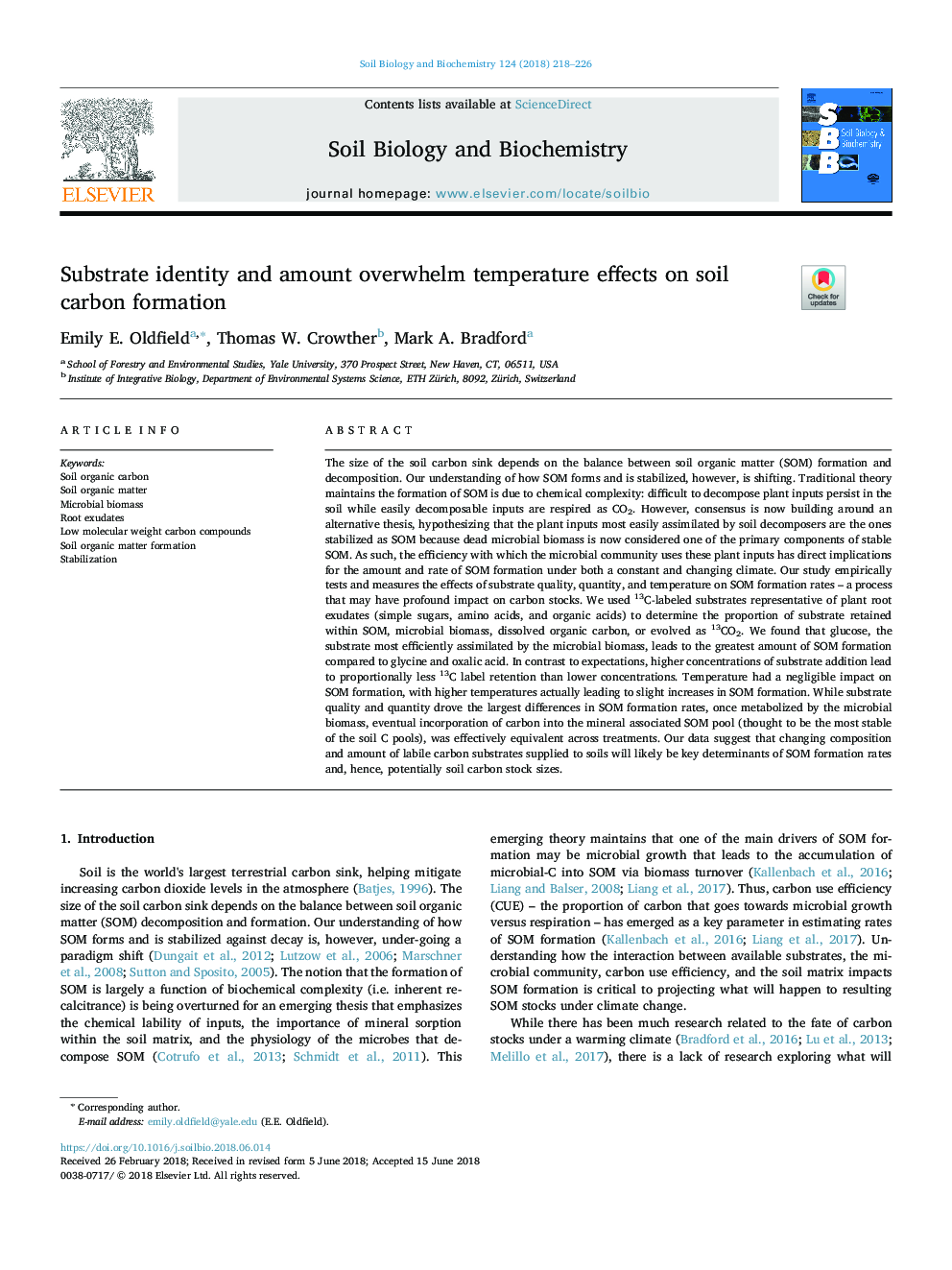| کد مقاله | کد نشریه | سال انتشار | مقاله انگلیسی | نسخه تمام متن |
|---|---|---|---|---|
| 8362601 | 1542560 | 2018 | 9 صفحه PDF | دانلود رایگان |
عنوان انگلیسی مقاله ISI
Substrate identity and amount overwhelm temperature effects on soil carbon formation
ترجمه فارسی عنوان
هویت بستر و مقدار اثرات دما بر روی تشکیل کربن خاک است
دانلود مقاله + سفارش ترجمه
دانلود مقاله ISI انگلیسی
رایگان برای ایرانیان
کلمات کلیدی
موضوعات مرتبط
علوم زیستی و بیوفناوری
علوم کشاورزی و بیولوژیک
دانش خاک شناسی
چکیده انگلیسی
The size of the soil carbon sink depends on the balance between soil organic matter (SOM) formation and decomposition. Our understanding of how SOM forms and is stabilized, however, is shifting. Traditional theory maintains the formation of SOM is due to chemical complexity: difficult to decompose plant inputs persist in the soil while easily decomposable inputs are respired as CO2. However, consensus is now building around an alternative thesis, hypothesizing that the plant inputs most easily assimilated by soil decomposers are the ones stabilized as SOM because dead microbial biomass is now considered one of the primary components of stable SOM. As such, the efficiency with which the microbial community uses these plant inputs has direct implications for the amount and rate of SOM formation under both a constant and changing climate. Our study empirically tests and measures the effects of substrate quality, quantity, and temperature on SOM formation rates - a process that may have profound impact on carbon stocks. We used 13C-labeled substrates representative of plant root exudates (simple sugars, amino acids, and organic acids) to determine the proportion of substrate retained within SOM, microbial biomass, dissolved organic carbon, or evolved as 13CO2. We found that glucose, the substrate most efficiently assimilated by the microbial biomass, leads to the greatest amount of SOM formation compared to glycine and oxalic acid. In contrast to expectations, higher concentrations of substrate addition lead to proportionally less 13C label retention than lower concentrations. Temperature had a negligible impact on SOM formation, with higher temperatures actually leading to slight increases in SOM formation. While substrate quality and quantity drove the largest differences in SOM formation rates, once metabolized by the microbial biomass, eventual incorporation of carbon into the mineral associated SOM pool (thought to be the most stable of the soil C pools), was effectively equivalent across treatments. Our data suggest that changing composition and amount of labile carbon substrates supplied to soils will likely be key determinants of SOM formation rates and, hence, potentially soil carbon stock sizes.
ناشر
Database: Elsevier - ScienceDirect (ساینس دایرکت)
Journal: Soil Biology and Biochemistry - Volume 124, September 2018, Pages 218-226
Journal: Soil Biology and Biochemistry - Volume 124, September 2018, Pages 218-226
نویسندگان
Emily E. Oldfield, Thomas W. Crowther, Mark A. Bradford,
